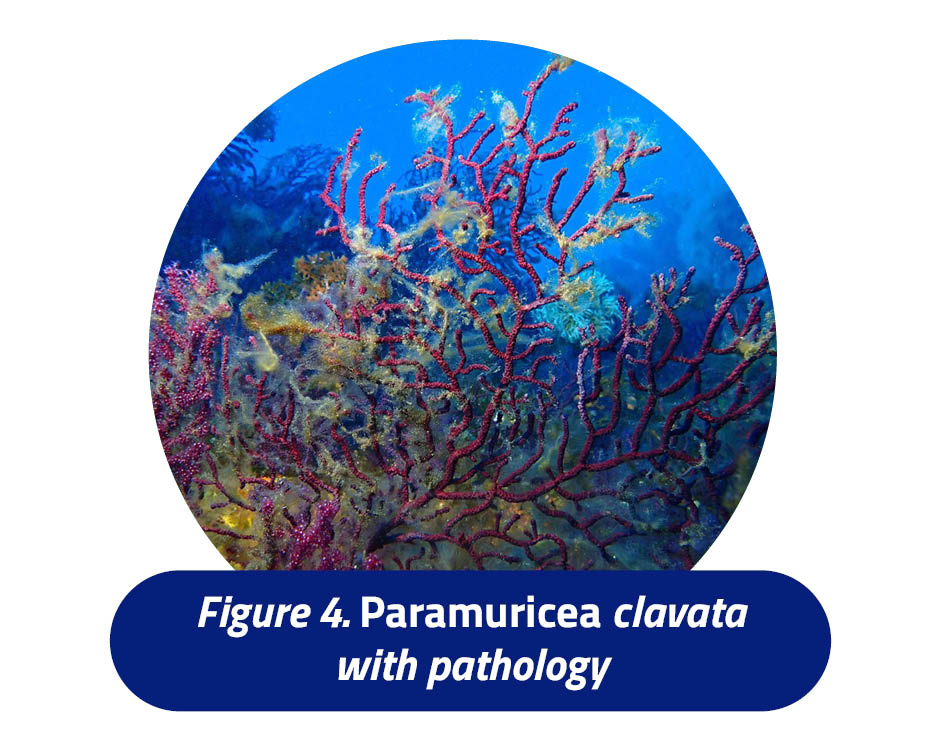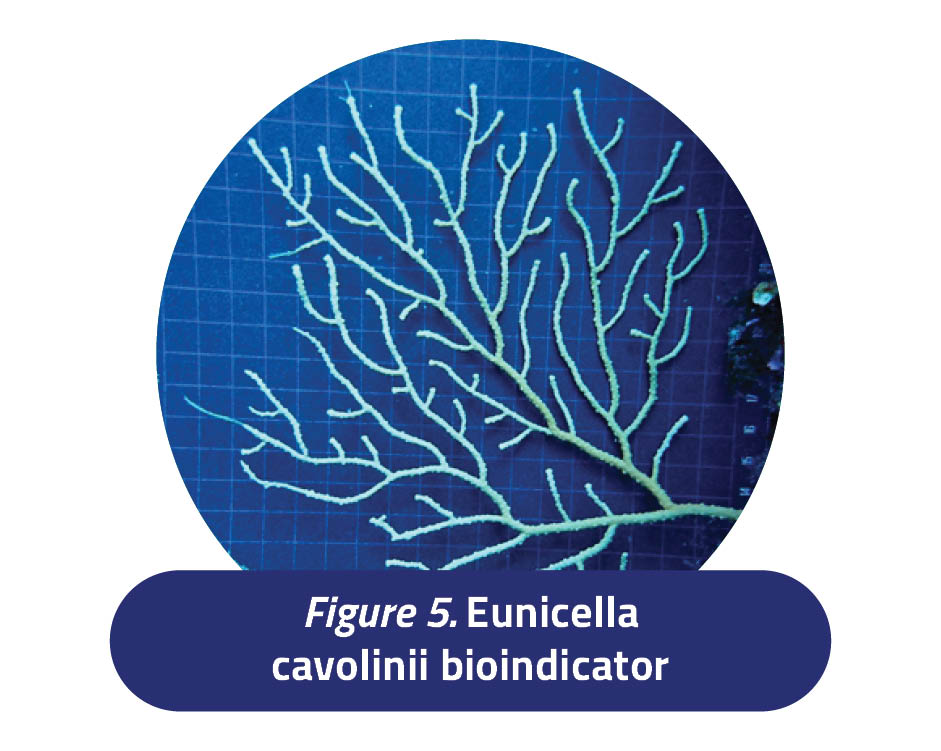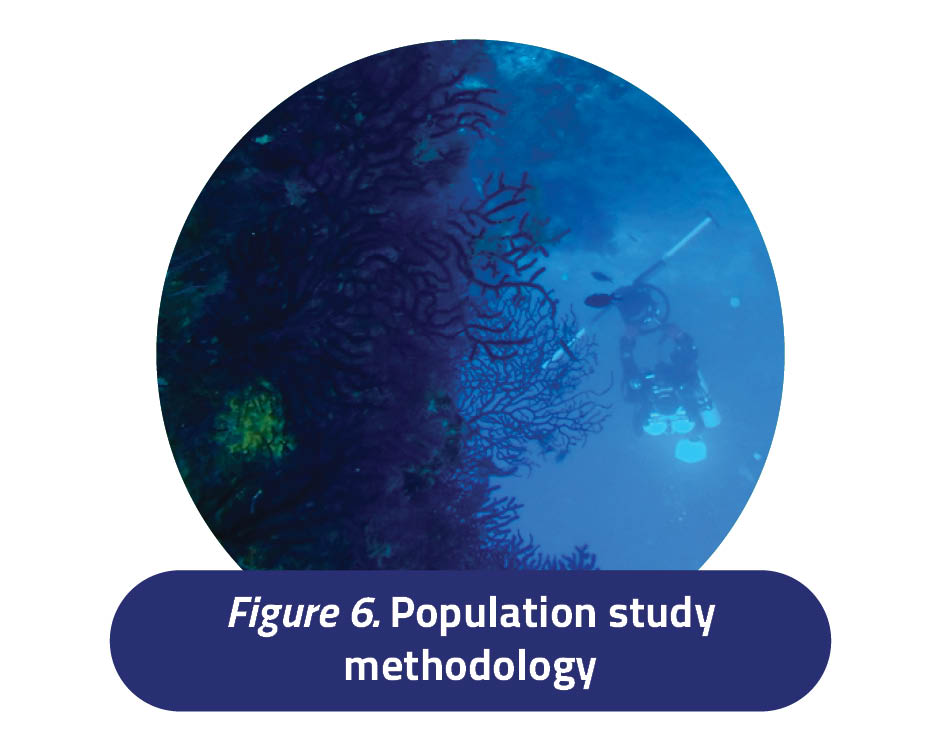SARDINIA SEPTENTRIONAL ITALY
Overview
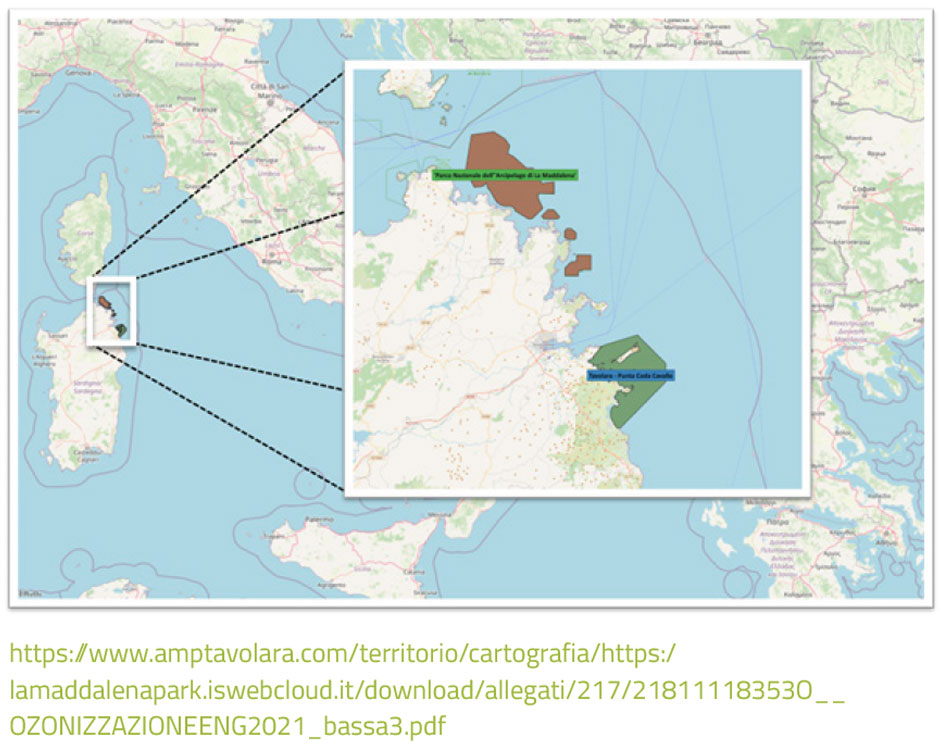
Area marina protetta Tavolara-Punta Coda Cavallo:
The Marine Protected Area of Tavolara Punta Coda Cavallo has a extension of 15.357 marine hectares and a coastline of 40 km. This island system, located 10 km north-east of the town of Olbia, has the island of Tavolara at its centre, being the second largest island of Sardinia, with Punta Cannone reaching an altitude of 565 metres above sea level.
The unique topography of Tavolara, composed mainly of calcareous mass with steep and vertical forms, contrasts markedly with the outlying islands such as Molara, Molarotto, la Piana and dei Cavalli, characterised by rounded contours and granitic structures.
The submerged environments feature extensive coralligenous habitats and Posidonia oceanica meadows, contributing to the generation of highly productive marine ecosystems in the Mediterranean.
In the MPA of Tavolara Capo Coda Cavallo imposing coralligenous formations can be found on all rocky bottoms below 30 m of depth. The coral habitat covers an area of 97.2 ha, or 0.6 % of the total marine surface of the MPA itself, estimated at 15,280 ha. In the MPA the coralligenous shows very different animal-dominant facies: depending on the different geomorphotypes, the mineralogy of the substrate or the different local conditions, even regardless of depth. The cliff coralligenous develops on vertical and subvertical walls between 15 m and 40 m deep, sometimes as an enclave in infralittoral stands, often in projecting structures forming frames of considerable thickness. It is characterized by strong densities of Leptopsammia pruvoti, accompanied by Eunicella cavolinii and Paramuricea clavata.
The Tavolara Punta Coda Cavallo MPA, established in 1997, has been managed since 2004 by a Consortium composed of the coastal municipalities of Olbia, San Teodoro and Loiri Porto San Paolo, ensuring the sustainability of its ecosystems and the preservation of biological and geological diversity.
Parco national La Maddalena:
The La Maddalena Archipelago, located northeast of Sardinia and close to the Strait of Bonifacio, is a collection of islands, islets, rocks and reefs, shaped by the influence of the mistral and the current of the Strait.
Covering a coastline of 180 kilometres, it is made up of seven main islands of granite origin: La Maddalena, Caprera, Budelli, Santa Maria, Spargi, Santo Stefano and Razzoli, as well as the islands of Nibani, Mortorio, Soffi and Camere. Of these, only La Maddalena (inhabited by about 12.000 people) and Caprera (with a population of 170) are permanently inhabited.
This island enclave, designated as a National Park and recognised as a Site of Community Interest (SCI) under the Habitats Directive 92/43 EC, is home to a diversity of marine and terrestrial habitats that contribute to the extraordinary biodiversity of the region, making it a place of great natural interest.
This park was created in 1994 by the Law of 4th January, in accordance with the Framework Law on Protected Areas. It represents the first national park in Sardinia, being the only one in Italy made up of the entire territory of a single municipality, covering the entire marine and terrestrial area of the whole Archipelago.
Subsequently, in 1996, the National Park Authority of the La Maddalena Archipelago was established by the Presidential Decree of 17 May.
In each of these areas, certain prohibitions apply, which are detailed in the Presidential Decree of 17 May 1996, which establishes the Park Authority.
It is important to note that both the La Maddalena Archipelago and the Bonifacio Strait are part of the Pelagos International Sanctuary for the Conservation of Marine Mammals. This sanctuary, which is the largest marine protected area in the Mediterranean and the first international Marine Protected Area in open waters, was established in 1999 by an agreement between France, Italy and the Principality of Monaco.
The main objective of Sardegna Coral Restoration is the surveillance, recovery and conservation of the ecosystem of coral reefs of NP Arcipelago di Maddalena and MPA Tavolara-Punta Coda Cavallo, Sardinia.
To achieve this goal, different specific objectives will be carried out.
- 1- Characterization of the coral populations on which the program will be implemented.
- 2- Characterization of thermal stress response at the individual (survival), cellular and molecular levels (biochemical analysis) in bioindicator species, in order to identify potential biomarkers to applied in recovery program.
- 3- Creation of an early warning system against heat stress phenomena.
- 4- Installation of an ecosystem recovery program in the area to protect the populations against the effects of climate change.
- 5- Creation of a local work team involved in the conservation of the area.
- 6- Creation of a dissemination and awareness program for the conservation and protection of the area.
Availability of MPA data
Monitoring and Management
- existing and planned monitoring
- also plans for additional monitoring during the project (low-cost/citizen science/..)
- this is local/minimal scale, related to the pilot actions
- and maybe also a (recommended) monitoring plan as output from from work in EFFECTIVE
Tavolara Punta Coda- Cavallo:
Regulatory and Zoning:
The regulation of activities in the Marine Protected Area Tavolara Punta Coda- Cavallo is governed by decree no. 299 of 03/12/2014 of the Ministry of the Environment and Protection of the Territory and the Sea.
Zone “A” (Integral Reserve): Activities such as swimming, professional and sport fishing, as well as sailing are prohibited, with the aim of preserving critical and sensitive areas.
Zones “B” (General Reserve) and “C” (Partial Reserve): Anchoring is restricted, except in specific areas designated for this purpose. Sport fishing, certain professional fishing techniques, the use of jet skis and water sports with towed equipment are also prohibited.
In this area we will implement the recovery programme in two localised areas, Occhio di Dio and Secca del Papa.
The underwater region of “Occhio di Dio” extends from 18 to 40 metres depth, characterised by large collapsed calcareous rocks, fissures and cavities, offering shelter to various marine species. After having carried out a population study of Eunicella cavolinii and identified the potential areas for the recovery programme, sentinel stations will be set up, equipped with temperature and solar irradiance sensors and photographic records, which will provide information on its evolution in its natural habitat, creating an early warning programme in the face of the effects of climate change. The first station will be located at a depth of 20 metres, the second at 25 metres, and the third at 30 metres.
The “Secca del Papa”seamount, located further offshore, exhibits four mounds between 24 and 50 metres deep, with an impressive vertical wall exceeding 20 metres, covered by Paramuricea clavata. Attention has been focused on the recovery of this species, especially at depths of 30 to 39 metres, due to the remarkable concentration observed in that range.
A comprehensive survey of the Paramuricea clavata population is currently underway to assess its current status. This analysis is focused on identifying areas of special interest for the implementation of an early warning programme for the effects of climate change, with temperature and solar irradiance sensors, and the execution of a recovery programme.
We currently have the historical temperature record since 2021 provided by the MPA.
Parco national La Maddalena:
Between the islands of Spargi and Budelli, a granite formation rises from a depth of 50 metres to 6 metres above the surface, “Secca di Washington”. Made up of huge eroded blocks, this structure exhibits intricate passages, caves and ravines. From 25 – 30 metres deep, communities of Paramuricea clavata can be sighted.
A comprehensive study of the Paramuricea clavata population is currently underway to assess its current status. The main focus of this population analysis is the identification of areas of special interest, with a view to the installation of sentinel stations and the implementation of a recovery programme aimed at preserving and strengthening this species. This effort lays the foundations for the implementation of concrete measures to promote the integral recovery of these valuable marine ecosystems.
Threats and impact
The surrounding area of the Marine Protected Area Tavolara Punta Coda- Cavallo is characterized by various human activities that have the potential to impact marine habitats and ecosystems.
Outfalls: there are no important discharge systems in the area, nor rivers of great flow that flow into the territory facing the Marine Protected Area. However, being an area with a high tourist vocation, in the summer there is a significant increase in purified wastewater in the stretch of coast of the three coastal municipalities of Olbia, Porto San Paolo and San Teodoro. Consider that in the municipality of Olbia, which has about 60 thousand inhabitants, summer presences exceed 430 thousand, while in San Teodoro, compared to a resident population of 5,000 inhabitants, summer presences reach 120,000. The figure is only estimable as the resident population must be added to the presence of tourists in “regular” structures that can be calculated, and tourists staying in second homes that escape the official counts of summer presences. However, we can say that the waters of the marine protected area of Tavolara-Punta Coda Cavallo are, according to the data collected by Si.Di.Mar., in good condition. Not presenting large productivity of microorganisms, they have excellent transparency, are free of anomalies of coloring and undersaturation of dissolved oxygen in benthic waters. It must be specified, however, that these data were obtained from point analysis in a few stations within the marine protected area.
Waste dumping from marine traffic: Surely it is a phenomenon that has a local character, that is widespread in particular in sheltered bays subject to frequent anchorages for night and day parking (roadsteads). The area closest to the work area affected by the project most subject to this criticality is the bay of Spalmatore di Terra in Tavolara, where in high season there can be up to 150-200 boats at anchor at the same time, with problems also related to impacts on Posidonia oceanica. Periodically, the Marine Protected Area of Tavolara organizes seabed cleaning initiatives with the involvement of local diving centers.
Illegal fishing: The dive sites directly affected by the restoration work (Secca del Papa and Occhio di Dio) fall within zone B (general reserve), where sport fishing is prohibited, while artisanal fishermen with authorization are allowed. However, even authorized professional fishermen can lower fishing gear at a distance of not less than 100 meters from the mooring buoys reserved for diving centers. However, as also noted by the study dives of the sites carried out in June, there is a fair presence of lines and other sport fishing accessories that impact on the bottom, as well as fragments of accidental abandoned gillnets. Less frequent but also present a certain impact from illegal underwater fishing, which however can have an impact on fish fauna but zero on benthos. At least in recent years, there have been no presences or verified episodes of trawling in the sites affected by the restoration work. However, there are known reports from mainly local artisanal fishermen, of trawling within the boundaries of the MPA in the area of the Gulf of San Teodoro, therefore about 4-5 miles from the sites concerned.
Military zone: The military base has a maximum presence of 20-25 people during the day and less than 10 at night. From 1970 until 2009, a simple biotrickling filter was used to treat wastewater, but in 2010 a more modern sewage treatment system was installed. This new system uses total oxidation with activated sludge and recovers the water in a special enclosure where indigenous plants are planted for phyto-purification. The surplus sludge is disposed of annually in a dedicated facility and could be used as fertiliser for garden plants. The new system requires regular maintenance and monitoring, with samples taken periodically and analysed by a specialised laboratory to meet environmental standards.
Restaurants on Tavolara: The presence of the two restaurants in the area of Spalmatore di Terra is seasonal, with inflows of about 300-500 people overall in the peak of high season. The beach of Spalmatore di Terra is affected by a considerable tourist flow that reaches 1,200-1,500 people a day during the peak season. There is an active wastewater treatment plant, but we don’t have precise information about it. On the island of Tavolara, always in Spalmatore di Terra, there is also a private home of the Marzano family, owners of a significant portion of the island. However, the impacts due to the occasional presence of the family don’t have significant impacts on marine habitats.
Diving activities: The dive sites where the restoration activities will take place are among the most frequented within the Tavolara MPA, with a few dozen recreational divers diving every day. There are therefore some impacts on benthos, in particular on fragile erect species, by inexperienced divers who don’t have a perfect command of the buoyancy. The impacts of the anchorages of the boats of the diving centers are extremely limited because the authorized dive sites are equipped with low-impact mooring buoys on the seabed (jumper system)
Parco national La Maddalena:
Climate change is affecting reef-building corals worldwide. Thus, scleractinian corals and gorgonians show a strong dependence on seawater temperature. In the current global warming trend, corals have experienced an increased frequency of bleaching and subsequent mortality as they have been exposed to higher than normal temperatures.
Although the effects of heat stress in tropical areas are better known, recurrent climate change-induced mass mortalities of corals and gorgonians have been recorded in the Mediterranean sea over the last 15 years.
The coral species Cladocora caespitosa, Eunicella cavolinii and Paramuricea clavata have shown exceptional local mortality in areas exposed to high thermal stress. These species are notable for having shown increased loss of energy reserves, feeding capacity and high partial mortality. Local sea surface temperature has been shown to increase necrosis events in this type of coral, in many cases leading to total death of the specimen and causing an eminent population decline.
Due to this problem, which threatens the survival of the populations, gorgonian recovery program must be implemented in order to strengthen them against thermal stress.
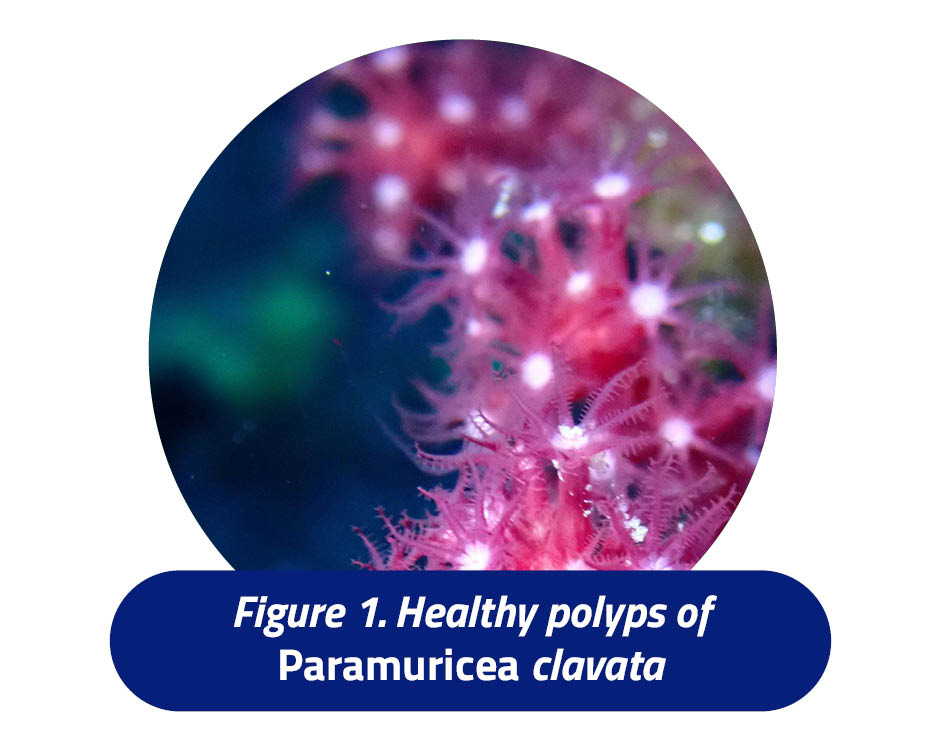
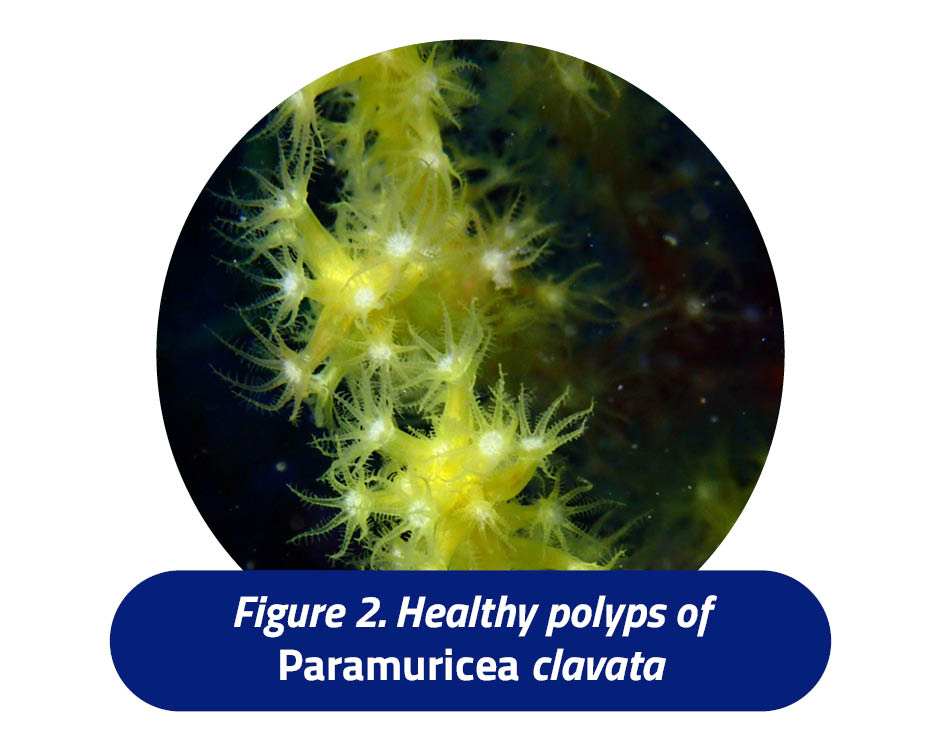
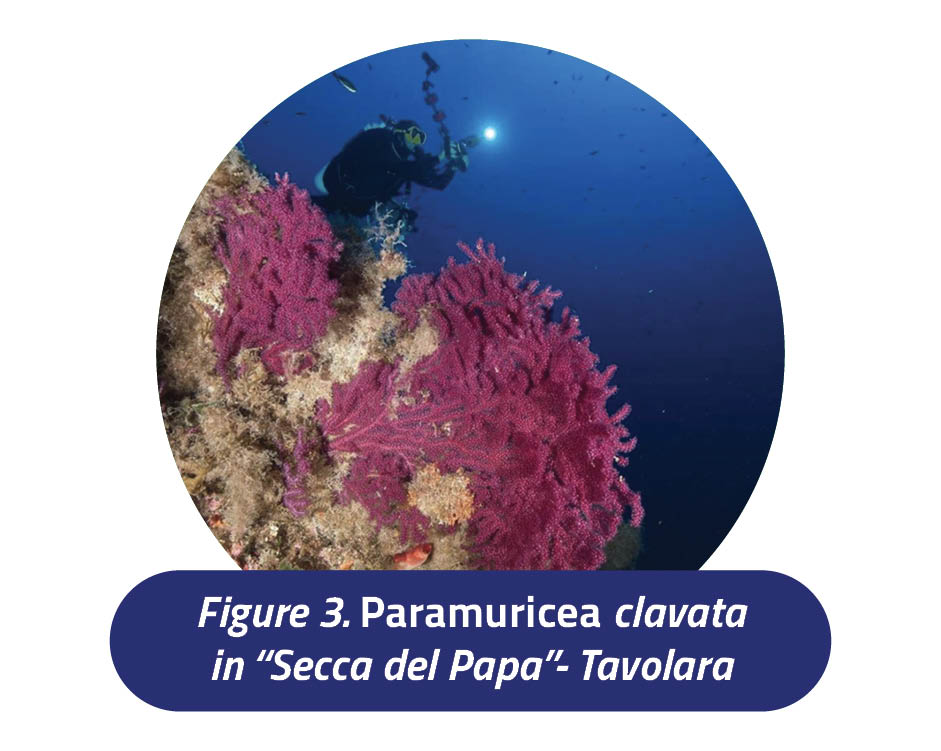
EFFECTIVE restoration actions
Sardegna Coral Restoration is implemented with a holistic approach that begins with a detailed population and impact study in the designated area. This analysis provides crucial information to understand the current health of marine ecosystems and assess the extent of damage caused by factors such as climate change.
An early warning programme will be established through the strategic installation of sentinel stations. These stations will closely monitor key indicators of the effects of climate change, enabling a rapid and effective response to any adverse changes in reef conditions.
In addition, Sardegna Coral Restoration will conduct a detailed thermal stress study on bioindicator species such as Eunicella cavolini and Paramuricea clavata. The identification of biomarkers at individual, cellular and molecular levels will allow a deeper understanding of the response of these species to thermal stress, facilitating the implementation of specific ecosystem restoration strategies.
The coral reef recovery programme will focus on techniques designed to increase the resilience of these marine ecosystems. This will include reef reef remediation, debris removal, treatment of affected individuals, reef restocking to strengthen populations and, in critical cases, relocation of endangered individuals. This holistic approach will be complemented by a comprehensive awareness programme to engage the local community and promote the valorisation of the area.
The highlights of this programme lie in its pioneering nature, evidenced by its cross-cutting approach that addresses multiple dimensions of the problem, its replicability that can serve as a model for other regions, and its innovation by incorporating advanced and sustainable techniques for seabed restoration.
As part of the wider monitoring of ecosystem health and recovery, annual surveys will be conducted focusing on sentinel mobile species (predominantly elasmobranchs). Biodiversity surveys using stereo Baited Remote Underwater Video system will be deployed to obtain a baseline of species occurrences, relative abundances, biomass and habitat-associations, with a particular focus on the restoration zones. Follow up monitoring will be performed every year to assess any changes in fish assemblages within the MPA, and any observed changes in patterns will be considered in relation to the associated cold coral reefs and the potential impact of thermal stress. The Baited Remote Underwater Video survey will provide valuable scientific data, which will feed into the management and monitoring of the restoration areas.
Public Engagement and Citizen Science
The Baited Remote Underwater Video survey will provide underwater video footage, showcasing the beauty of wildlife and biodiversity in the MPA. These images can be used for public awareness and outreach, and increase public involvement.
Institutional and legal framework
Relevant EU projects for the MPA pilot site
Scientific publications
Consorzio di Gestione Area Marina Protetta di Tavolara-Punta Coda Cavallo. Dichiarazione Ambientale 2019, Rev. 15 30/09/2020
